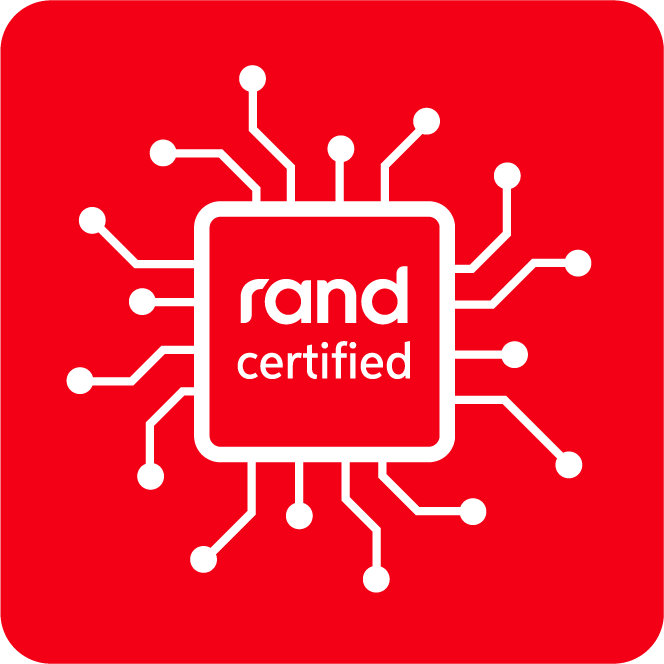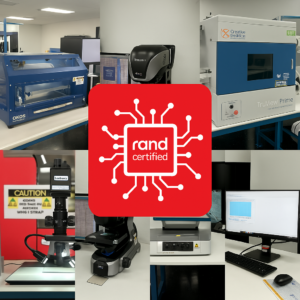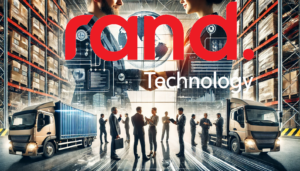In a world where rapid technological advances and unprecedented crises like the COVID-19 pandemic are reshaping the business landscape, one constant determines a company’s strength and resilience: its people. For any organization, particularly those in highly complex industries like electronics supply chain management, investing in talent is essential—not just any talent, but diverse talent.
At Rand Technology, a leading component supplier and global partner for high-tech industries, we understand the critical importance of a diverse and inclusive culture. Our commitment to building resilient supply chains and supporting innovation goes hand-in-hand with promoting diversity in every aspect of our business. In this blog, we want to share why diversity and inclusion (I&D) are vital for organizations that seek to thrive and how investing in these areas directly impacts profitability, decision-making, and sustainability.
The Business Case for Diversity: Stronger Than Ever
A 2020 report by McKinsey & Company titled “Diversity Wins: How Inclusion Matters” provides compelling data that underscores the business case for diversity. According to the report, companies in the top quartile for gender diversity on executive teams are 25% more likely to experience above-average profitability than their less diverse peers. When considering ethnic and cultural diversity, the results are even more striking, with a 36% higher likelihood of outperforming industry norms.
The data is clear: diverse companies are more successful. But why does diversity have such a significant impact on financial performance? The answer lies in the unique perspectives and approaches that diverse teams bring to problem-solving and decision-making. In industries like ours, where rapid technological shifts, market demands, and global supply chains are common, the ability to innovate and adapt is crucial.
Why Supply Chain Leaders Should Care About Diversity
The supply chain industry is undergoing a transformation. Emerging technologies like artificial intelligence, machine learning, and blockchain are changing the way we manage logistics, procurement, and inventory. However, technology alone cannot solve the challenges of modern supply chains. People—the right people—are needed to manage, optimize, and innovate.
Supply chain leaders must understand that a diverse team brings distinct advantages:
- Better Decision-Making: According to McKinsey, diverse teams are more likely to make bold decisions and effectively anticipate shifts in market demand and customer needs. This is particularly relevant in supply chain management, where proactive decisions are crucial for mitigating risks and capitalizing on opportunities.
- Enhanced Resilience: The COVID-19 pandemic has shown us how vulnerable global supply chains can be. Companies with a strong commitment to I&D have been able to navigate the crisis more effectively, leveraging the diverse perspectives within their teams to devise innovative solutions for unexpected disruptions.
- Broader Talent Pool: The competition for talent in the technology and supply chain sectors is fierce. By fostering an inclusive culture, companies open themselves up to a broader pool of talent—women, underrepresented minorities, and individuals from diverse socio-economic backgrounds. Embracing this diversity allows supply chain organizations to attract and retain the best talent, regardless of where they come from.
At Rand Technology, our approach to supply chain management is informed by our belief that diversity is an asset, not just in human resources but in thought, approach, and strategy. By assembling a diverse workforce that spans different geographies, cultures, and experiences, we strengthen our ability to provide reliable and adaptable solutions to our clients.
The Cost of Failing to Invest in Diversity
While the business case for diversity is strong, the consequences of neglecting I&D initiatives can be just as powerful. McKinsey’s findings reveal that companies that lag in diversity are increasingly likely to underperform. In fact, in 2019, companies in the bottom quartile for gender diversity were 19% more likely to underperform in profitability than other companies.
Neglecting diversity can lead to a narrow-minded approach to problem-solving, limited innovation, and a lack of agility—all of which are fatal in the fast-moving world of electronics and technology. For supply chain leaders, this means a higher risk of inefficiencies, delays, and vulnerabilities in times of disruption.
More than just financial performance, companies that deprioritize I&D risk damaging their brand and reputation. In an age when consumers and stakeholders are increasingly vocal about their expectations for corporate social responsibility, failing to create an inclusive culture can lead to losing customer loyalty, a weaker employer brand, and difficulty forming partnerships.
Building an Inclusive Culture: Lessons from the Winners
For organizations looking to improve their diversity and inclusion efforts, the experiences of diversity leaders are instructive. McKinsey’s report identifies a clear gap between companies taking decisive action on diversity and those falling behind. The companies that are succeeding are characterized by the following:
- Commitment from Leadership: Real change starts at the top. The companies that have made significant progress in diversity have leaders who are committed to I&D as a business imperative. At Rand Technology, we actively promote an inclusive culture from the executive level, ensuring that our leadership reflects the diversity we want to see across the entire organization.
- Bold and Systematic Action: Diversity is not achieved through isolated initiatives. Successful companies take a systematic approach to improving representation across all levels of the organization. They set targets, track progress, and hold themselves accountable. For example, Rand Technology has implemented mentoring programs aimed at nurturing diverse talent within our supply chain operations and has established partnerships with organizations that promote diversity in the technology sector.
- Focus on Inclusion, Not Just Diversity: Representation alone is not enough. To truly benefit from diverse talent, organizations must foster an inclusive culture where everyone feels valued and empowered to contribute. This means addressing unconscious bias, ensuring fairness in promotions and pay, and creating an environment where diverse perspectives are actively sought and considered.
Actionable Steps for CEOs and Executives to Drive I&D
If you’re an executive leader, you may wonder how to take meaningful steps toward creating a diverse and inclusive culture. Here are some actionable strategies based on both the McKinsey report and our experience at Rand Technology:
- Make Diversity a Business Priority
Diversity should be integrated into your core business strategy, not treated as an HR project. Identify clear business goals tied to improving I&D, such as increasing the percentage of women in leadership or ensuring diverse representation on key decision-making teams. Measure the impact of diversity on business outcomes like profitability, customer satisfaction, and innovation.
- Set Clear, Data-Driven Targets
Without targets, there can be no accountability. Set specific, measurable goals for increasing diversity across different levels of the organization, from entry-level positions to the executive suite. Use data to track progress and identify areas for improvement. At Rand Technology, we leverage data analytics to assess diversity metrics across our global workforce, helping us understand where to focus our efforts.
- Foster an Inclusive Environment
An inclusive environment goes beyond diversity metrics. It ensures that every employee feels heard, respected, and empowered. This involves creating channels for feedback, addressing microaggressions, and training leaders to be champions of inclusion. Inclusive environments also provide flexibility—such as remote working options—that can help retain diverse talent, particularly women and those from underrepresented backgrounds.
- Promote Diverse Talent into Leadership Roles
Representation at the leadership level is key. One of the most impactful actions a company can take is to promote diverse individuals into decision-making roles. This ensures that different perspectives are included in strategic decisions, provides role models for other employees, and sends a clear message about the company’s commitment to diversity.
- Invest in Talent Development and Retention
Building a diverse workforce requires a strong focus on talent development. This means investing in mentorship programs, training initiatives, and leadership development opportunities that support the growth of diverse employees. At Rand Technology, our mentorship programs connect junior employees with senior leaders, providing guidance and support as they advance in their careers.
The Future of Supply Chains Depends on Diversity
As we look towards the future, it’s clear that the challenges facing supply chains will continue to evolve. From managing global disruptions to integrating advanced technologies like AI and IoT, supply chain organizations must be more agile and innovative than ever before. Diversity and inclusion are key enablers of this agility.
A diverse workforce is better equipped to anticipate and respond to market changes, understand the needs of a global customer base, and develop creative solutions to complex challenges. At Rand Technology, we see our commitment to I&D as an investment in our future—a way to ensure we remain at the forefront of innovation in the supply chain sector.
Diversity Wins, and So Will You
The message is simple: diversity wins. Companies that prioritize diversity and foster an inclusive culture are not just doing the right thing morally—they are positioning themselves for long-term success. For CEOs and executives, the challenge is to move beyond lip service and take bold, systematic actions that drive real change.
At Rand Technology, we are committed to making diversity and inclusion a central part of our business strategy and encourage our partners, clients, and peers in the industry to do the same. Building diverse, inclusive teams can unlock the potential for greater innovation, resilience, and profitability, ensuring we thrive in today’s dynamic and challenging environment.
If you’d like to learn more about how we can strengthen your supply chain through innovative and inclusive solutions, please contact us at randtech.com/contact-us.


















